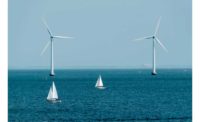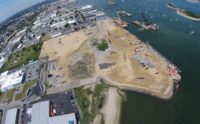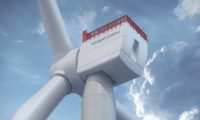California and New Jersey, which have been on slower tracks than other coastal states for offshore wind-energy development, took big steps last month to catch up.

On Sept. 20, New Jersey’s Board of Public Utilities began accepting developer applications to build offshore projects from 300 MW to 1,100 MW—touted as the largest single-state offshore wind solicitation in the U.S.
It is the first step to meet a more ambitious 2030 wind energy goal of 3,500 MW set by Gov. Phil Murphy (D), who took office in early 2018 and would also reverse Republican predecessor Chris Christie’s clean-energy stance over the prior eight years.
“In the span of just nine months, New Jersey has vaulted to the front of the pack in establishing this cutting-edge industry,” Murphy said.
The proposal window is open until Dec. 28, with regulators set to approve projects by next July 15. Proponents say the schedule will allow developers to qualify for federal tax credits that expire at the end of 2019.
Concerns remain about power-transmission-system construction and higher wind-energy prices, but advocates say technology and building costs fell 27% between 2012 and 2017, and board President Joe Fiordaliso said clean energy will develop a new revenue stream for the state. according to publication NJ Spotlight.
California Opens Ocean Sites
In California, the U.S. Bureau of Energy Management, and the state energy commission, proposed on Sept. 17 to open 1,149 sq miles of ocean to offshore wind, including areas off Humboldt Bay, Morro Bay and the Diablo Canyon nuclear plant near Avila Beach.
BOEM established a task force in 2016 to develop wind generation along the Pacific coast—which has high-capacity wind supply but added technical challenges because of much-deeper water—after an unsolicited lease request from Trident Energy.
“The sense in the room was cautiously optimistic that offshore wind could be used to help California reach its 100% Clean Energy Act requirements,” John Romero, a BOEM spokesman, told ENR.
The new state law, signed Sept. 10 by Gov. Jerry Brown (D), mandates utilities to achieve 60% of their energy supply from renewable sources by 2030 and 100% by 2045. It replaces a 2015 law that required 50% of the state’s energy come from renewable sources by 2030.
BOEM expects to issue a call for “information and nominations” for leases from potential developers, Romero says, and hopes for a shorter time frame to issue them, possibly 18 months.
The agency received a new and unsolicited lease request on Sept. 13 from The Redwood Coast Energy Authority in Eureka, which earlier this year competitively selected the consortium of Principle Power, EDPR Offshore North America and Aker Solutions to develop a 100-MW to 150-MW offshore wind farm to be located about 20 miles off Humboldt Bay by 2024.
The authority and Trident Energy lease requests fall within the areas that BOEM proposes for development.
And in New York, developers have until Oct. 5 to submit comments on a draft request for offshore wind project proposals of at least 400 MW. An alternative proposal would allow smaller projects of at least 200 MW.
The final RFP will be issued before year end, says the New York State Energy Research and Development Authority. New York plans to have 2,500 MW of offshore power built by 2030.






Post a comment to this article
Report Abusive Comment